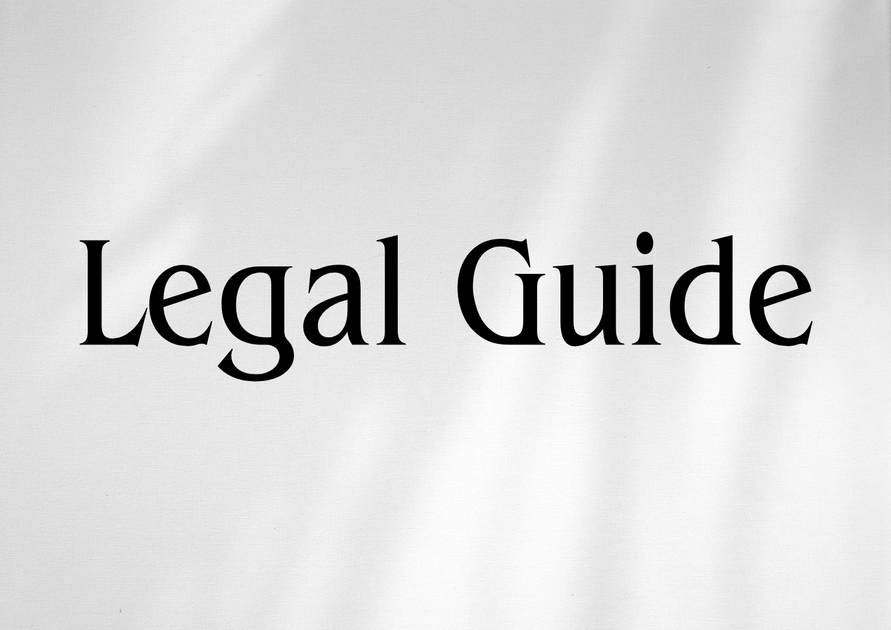Introduction: Navigating the Evolving Landscape of UAE Aviation Taxation
As the United Arab Emirates (UAE) cements its status as a premier global aviation hub, legal and fiscal frameworks surrounding aviation assets and leasing arrangements have come under intensified scrutiny. The introduction of recent tax reforms—particularly post-implementation of Federal Decree-Law No. 47 of 2022 on the Taxation of Corporations and Businesses, together with Cabinet Decision No. 74 of 2023—has fundamentally shifted the tax environment for stakeholders in aviation. For aircraft lessors, airlines, financiers, and corporate clients, understanding the dynamic interplay between federal tax law, international conventions, and regulatory compliance is now an imperative, not a mere advantage. This article provides an authoritative overview of the current legal and taxation landscape for aviation assets and leasing in the UAE, analyzing law updates, compliance challenges, and actionable strategies for future-proofing business operations.
Over the course of this in-depth analysis, we will systematically deconstruct recent legislative changes, compare previous and current regimes, and provide consultative insights tailored to business leaders, HR managers, legal practitioners, and financial decision-makers operating or investing in the UAE’s aviation sector. Our aim is to provide more than just technical interpretation: instead, we deliver strategic guidance that enables efficient legal compliance and optimal risk management amidst 2025 law updates.
Table of Contents
- Overview of UAE Aviation Asset and Leasing Regulations
- Recent Updates: Federal Decree-Law No. 47 of 2022 and Relevant Cabinet Decisions
- Taxation Framework: Applicability to Aviation Assets and Leasing
- Interactions with International Conventions and UAE Tax Treaties
- Legal Structuring and Practical Considerations for Leasing Transactions
- Compliance Risks and Enforcement under UAE Law 2025 Updates
- Case Studies: Impact of Legal Changes on Industry Stakeholders
- Strategies for Effective Compliance and Future-readiness
- Conclusion: Shaping the Future of Aviation Asset Taxation in the UAE
Overview of UAE Aviation Asset and Leasing Regulations
The Legal Context
The UAE’s aviation industry is governed by a combination of civil aviation regulations, federal tax laws, and international conventions such as the Cape Town Convention (which the UAE acceded to via Federal Decree No. 48 of 2008). The General Civil Aviation Authority (GCAA) issues operational and safety directives, while the UAE Federal Law No. 20 of 1991 (Civil Aviation Law) addresses registration, ownership, and transfer of aircraft. With the introduction of corporate income tax (CIT) under Federal Decree-Law No. 47 of 2022, taxation has become integral to transaction structuring in aviation leasing.
Key Regulatory Authorities
- General Civil Aviation Authority (GCAA)
- Federal Tax Authority (FTA)
- Ministry of Justice
- Ministry of Economy
The alignment of aviation regulation and tax law is now a defining characteristic of asset and leasing strategies in the UAE.
Recent Updates: Federal Decree-Law No. 47 of 2022 and Relevant Cabinet Decisions
UAE Law 2025 Updates: A Brief Overview
Federal Decree-Law No. 47 of 2022 (“UAE Corporate Tax Law”) introduced corporate income tax applicable to business entities, reshaping the fiscal landscape. Cabinet Decision No. 74 of 2023 further clarified aspects regarding taxable persons, exempt entities, and free zone tax incentives, bearing significant impact on aviation leasing companies and aviation asset ownership structures.
Prior to these reforms, the UAE operated as a tax-free jurisdiction for most aviation activities, with only nominal exposure to indirect taxes.
Comparison Table: Key Changes in UAE Aviation Tax Law
| Area | Pre-2022 Law | Post-47/2022 Law |
|---|---|---|
| Corporate Income Tax | No corporate tax on aviation operations | 9% standard, 0% qualifying Free Zones subject to strict criteria |
| Eligible Entities | Broadly exempt | Defined list of exempt entities, others subject to registration |
| Taxation of Lease Rentals | Generally not taxed if offshore | Taxed if UAE sourced, unless exempt as QFZ Person |
| International Tax Agreements | Limited application | Greater integration with UAE’s DTA network and Cape Town Convention |
| Transfer Pricing Rules | Limited or not applicable | Now required on related party leasing/financing |
Source: UAE Federal Decree-Law No. 47 of 2022; Cabinet Decision No. 74 of 2023; UAE Ministry of Justice Publications.
Taxation Framework: Applicability to Aviation Assets and Leasing
Who Is Taxable?
According to Article 2 of the Corporate Tax Law, any legal entity or individual conducting a business activity in the UAE is liable for corporate income tax, unless specifically exempted under the legislation.
- UAE incorporated lessors and lessees (including special purpose vehicles (SPVs) for asset holding)
- International lessors with a UAE permanent establishment or UAE-source income (eg, lease payments)
- Free zone entities claiming 0% tax incentives—subject to stringent qualifying requirements under Cabinet Decision No. 139 of 2023
Types of Taxable Aviation Activities
- Operating and finance lease income
- Maintenance and service contracts related to aircraft
- Sale-and-leaseback transactions
- Aircraft purchase, disposal, and mid-lease transfers
- Residual value guarantees or performance-based returns
When Is Aviation Leasing Income Taxable?
Generally, rental payments sourced in the UAE, or received by a UAE business, are subject to corporate tax at 9% unless exempted. If the lessor is a Qualified Free Zone Person (QFZP) and the counterparty is a foreign entity (or another QFZP), then a 0% rate may apply.
However, the QFZP exemption is not automatic. Lessors or asset holding vehicles must:
- Satisfy substance requirements (adequate local economic presence)
- Transact with non-mainland UAE or foreign entities for 0% rate
- Avoid tainted (disqualifying) mainland income beyond de minimis limits
- Comply with transfer pricing, financial reporting, and registration duties
Practical Examples
Example 1: An Irish leasing company leases aircraft to an airline operating in the Dubai International Financial Centre (DIFC, a Free Zone). Unless the Irish lessor has a UAE permanent establishment, only UAE-source income may be taxed, with possible relief under Dubai-Ireland DTA and the Cape Town Convention.
Example 2: A UAE onshore company leases aircraft to a GCC airline. This triggers local tax obligations, and transfer pricing scrutiny if the counterparties are related.
Interactions with International Conventions and UAE Tax Treaties
Cape Town Convention and Its Impact
The UAE’s accession to the Cape Town Convention on International Interests in Mobile Equipment (2008) and its Aircraft Protocol has pivotal implications for asset-based financing and the enforceability of international interests in aircraft.
- Asset Registration: Rights and interests of lessors are now internationally recognized and enforceable.
- Taxation: Convention provisions interact with double taxation agreements (DTAs) to reduce uncertainty over leasing transaction tax treatment.
Double Taxation Agreements (DTA)
The UAE maintains over 135 DTAs. For lessors/lessees, this often provides relief from double taxation on operating income and may affect withholding tax obligations on cross-border lease payments.
Consultancy Insights
- Legal analysis of each transaction’s structure is necessary to optimize tax and treaty benefits.
- Documentation must prove beneficial ownership of lease income, and correct application of treaty rates.
- Failure to comply with DTA procedures or mismatch with Cape Town filings can trigger adverse tax exposure or loss of treaty benefits.
Legal Structuring and Practical Considerations for Leasing Transactions
Optimal Structures for Tax Efficiency
- Use of Free Zone Entities: Highly recommended for lease transactions with international counterparties, given the right entity is a QFZP.
- Onshore SPVs may be used for aircraft registration but beware corporate tax exposure.
- Offshore Leasing Vehicles: Appropriate where treaty relief and no UAE permanent establishment risk apply.
Due Diligence, Compliance, and Deal Documentation
Key compliance touchpoints in a modern UAE leasing transaction include:
- Tax registration with the FTA
- Anti-money laundering (AML) checks and source of funds verification
- Asset registration under the Cape Town Convention
- Filing lease contracts and obtaining necessary GCAA permissions
- Drafting lease/rental agreements to allocate tax risk, with gross-up provisions, and address DTA and CIT consequences
- Compliance with transfer pricing documentation under Ministerial Decision No. 97 of 2023
Table: Free Zone vs Onshore Entity Comparison
| Criteria | Free Zone Entity (QFZP) | Onshore UAE Entity |
|---|---|---|
| CIT Rate | Generally 0% (if qualifying) | 9% standard CIT rate |
| Transactions with Mainland | Subject to de minimis rules, risk losing 0% | Full CIT exposure |
| Reporting Obligations | Substance, transfer pricing, FTA reporting | FTA registration and full reporting |
| International Treaty Access | Depends on structure; typically yes | Yes, subject to beneficial ownership |
Compliance Risks and Enforcement under UAE Law 2025 Updates
Key Penalties and Regulatory Focus
With increased oversight by the Federal Tax Authority and GCAA, non-compliance risk is sharply elevated. Recent FTA enforcement guidelines (as published in the Federal Legal Gazette 2024) emphasize:
- Significant administrative penalties for unlawful QFZP claims
- Fines for non-registration and non-filing of tax returns (AED 10,000 and above per default)
- Transaction unwind, denial of treaty relief, or 9% CIT imposition on misclassified income
- Potential criminal liability for deliberate evasion or false statements
Suggested Visual: Penalty Comparison Table
| Offense | Penalty (Approximate) |
|---|---|
| Failure to register with FTA | AED 10,000+ |
| Late return filing | AED 1,000+ per month |
| Incorrect QFZP claim | Loss of 0% rate + further fines |
| Non-compliance with transfer pricing | AED 10,000 – AED 50,000 per case |
| AML/CTF violations | Criminal prosecution, fines |
Key Risk Management Takeaways
- Routine legal audits and training
- Internal compliance function for deal screening and FTA correspondence
- Timely filing and robust documentation for CIT, transfer pricing, and Cape Town Registry filings
Case Studies: Impact of Legal Changes on Industry Stakeholders
Case Study 1: International Lessor with UAE Base
An Irish lessor establishes a subsidiary in Abu Dhabi Global Market (ADGM) to lease Airbus A320 aircraft to both UAE and GCC airlines. Owing to DTA benefits and QFZP qualification (subject to de minimis mainland income), only aircraft on lease to local airlines are potentially exposed to 9% CIT. The group must maintain clear financial segregation, substance compliance, and annual transfer pricing reports.
Case Study 2: Emirati Airline Expanding Fleet
An Emirati airline signs operating leases from UK and Singapore lessors, each with different treaty profiles and local registration status. Lease payments may trigger UAE-source tax obligations but can be mitigated through treaty relief and gross-up clauses in contracts. Due diligence is required to secure Cape Town registration of interests and ensure regulatory compliance across all jurisdictions.
Case Study 3: Private Wealth Investors Entering Aircraft Leasing
A UAE-based high-net-worth investor seeks to enter the aircraft leasing market via an onshore SPV. Without suitable structuring and QFZP registration, all lease income—even from overseas airlines—may be subject to 9% CIT, eroding returns.
Strategies for Effective Compliance and Future-readiness
Best Practice Compliance Checklist
- Assess all aviation asset and leasing structures against the latest federal and cabinet legislation
- Obtain timely and accurate tax registrations for each entity with the FTA
- Regularly review substance and transfer pricing requirements for free zone entities
- Draft comprehensive legal documentation that clearly allocates tax risk and addresses treaty benefits
- Monitor all developments from the Ministry of Justice, FTA, and GCAA for regulatory updates affecting aviation risk and compliance
- Engage specialist legal advisers for cross-border transactions and in advance of any audit or FTA review
Suggested Visual: Aviation Leasing Compliance Process Flow Diagram
A process diagram illustrating key compliance steps (entity incorporation, GCAA application, FTA registration, substance and transfer pricing checks, Cape Town registration, deal closing, and ongoing monitoring) would enhance clarity for stakeholders.
Forward-looking Recommendations
- Plan transactions early with a focus on treaty relief and QFZP eligibility
- Systematically segregate qualifying and non-qualifying activities for free zone entities
- Consider adoption of automated compliance management systems for document retention, reminders, and audits
Conclusion: Shaping the Future of Aviation Asset Taxation in the UAE
Rapid regulatory evolution means that familiar reliance on tax neutrality for aviation in the UAE is a thing of the past. With Federal Decree-Law No. 47 of 2022 and accompanying legislation, all stakeholders must adapt to new compliance obligations, risk controls, and opportunities for structuring. The next phase of the UAE’s aviation sector will be characterized by tighter legal scrutiny, the need for robust documentation, and careful leveraging of free zone and treaty advantages.
Legal practitioners and corporate leaders are advised to adopt proactive strategies: maintain updated knowledge of local and international tax obligations, conduct regular compliance reviews, and structure new transactions for both operational efficiency and tax optimization. The UAE remains a powerhouse in global aviation finance, but success in the new regulatory climate necessitates sophisticated legal and fiscal planning at every stage of the asset life cycle.



